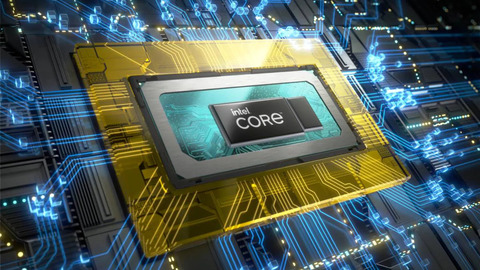Intel 12th Gen CPUs For Slim And Light Laptops Officially Announced.
Intel 12th Gen processors, based on its all-new hybrid architecture, were announced in January. The H-series, the first of three lines of laptop CPUs aimed at gaming laptops and workstations, was the focus of that announcement. The P- and U-series of performance thin-and-light laptops, as well as those with modern/foldable PC designs, will be available starting today.
While the chips are now official, customers will not have to wait long to see them in new laptops, as Intel anticipates OEMs shipping devices in March. Acer, Asus, Dell, Fujitsu, HP, Lenovo, LG, MSI, NEC, Samsung, and “others,” which presumably includes Microsoft and Razer, are among the partners.
Intel 12th Gen
In Windows 11, the new mobile processors use Performance-cores (P-cores) and Efficient cores (E-cores) in conjunction with Intel Thread Director, just like the 12th Gen desktop processors. The architecture is similar to that of Arm-based big.LITTLE CPUs, with larger, more power-hungry cores paired with smaller, more energy-efficient ones. The larger cores handle the user’s current workloads, such as video editing or gaming, while the smaller cores handle background tasks or any minimized apps.
This hybrid design is based on energy efficiency, which, when combined with Intel’s smaller nanometer chip design, provides users with significantly more power when needed while also extending battery life.

Indeed, Intel 12th Generation has far more cores than Intel 11th Generation, particularly in the traditional Ultrabook segment of thin-and-light laptops. Previously, an 11th Gen top-tier Core i7-1165G7 processor could only have four cores and eight threads; now, it can have up to fourteen cores (6 P-cores and eight E-cores) and twenty threads.
These new 12th Generation mobile chips are further divided into three categories:
P-series (28W): For thin-and-light performance laptops.
U-series (15W): For thin-and-light (convertible) laptops.
U-series (9W): For thinner detachable and new foldable PC designs
When compared to its 11th Gen processors, Intel claims the following in terms of real-world performance:
- Multi-thread performance is up to 70% faster.
- 3D rendering performance nearly doubled
- Photo editing is up to 30% faster.
Many traditional clamshell laptops, as well as Dell’s highly anticipated redesigned XPS 13 Plus, Lenovo ThinkPad X1 Nano G2, and HP Elite Dragonfly G3, will use that 28W P-series processor, e.g., Core i7-1280P (14 cores; 20 threads), as OEMs refresh their current lineup. The 15W U-series will likely be used in thinner devices, such as “x360” convertible PCs.
It is expected that the 9W U-series chips will be used in detachable “Surface Pro-like” PCs as well as Intel’s move toward foldable PCs like the Asus ZenBook 17 Fold OLED, which is perhaps more interesting. These PCs can use the new Core i7-1260U processor, which has 10 cores (2P, 8E) and 12 threads with a maximum turbo speed of 4.7GHz (29W).
The switch to 12th Gen U-series (9W) processors contrasts sharply with Lenovo’s experimental ThinkPad X1 Fold, which featured an Intel 11th Gen (Lakefield) i5-L16G7 processor with only 5 cores (5 threads) and a maximum turbo speed of only 3.0GHz.
Of course, how these chips compare to AMD’s latest Ryzen 6000 Mobile processors remains to be seen. AMD, like Intel, has recently improved sleep states, battery efficiency, performance, graphics, and features on its non-gaming processors. However, Intel now appears to have the upper hand in terms of cores over AMD, which is a fascinating shift in power.
We should have comparative tests later this year with Microsoft’s unannounced Surface Laptop 5, which is expected to ship with Intel 12th Gen and AMD Ryzen 6000 Mobile processor options.
Intel Evo
Revisions to Intel’s Evo platform round out the news. OEM laptops must meet specific criteria, according to Intel, to ensure an optimal PC experience, such as fast resuming, long battery life, and specific hardware requirements.
The camera in the second-edition Evo guidelines had to be at least 720p resolution, and the speakers and tuning had to be of high quality. In addition, a new “Key Experience Indicators” (KEI) dubbed “Intelligent Collaboration” has been added.
The new Engineered for Intel Evo program, which is expanding to accessory partners this year, is another significant addition. Engineered for Intel Evo accessories labels will start appearing on devices that meet Intel’s requirements, such as the Kensington SD5700T Thunderbolt 4 dock and the Poly Voyage 4320UC Bluetooth conference headphones.